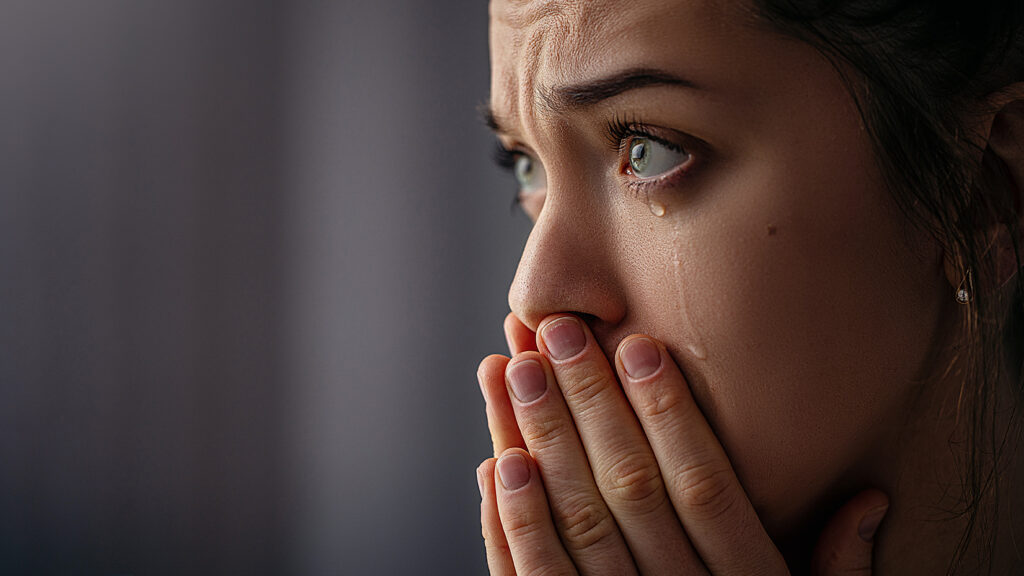When seasons change from the warm months of summer to the cold of winter, it’s common for people to feel a little down. As the days grow shorter and a chill fills the air, many find themselves missing the sunlight of summer. This change in season can bring more than a craving for cozy blankets and hot cocoa. It can trigger a significant shift in mood and well-being known as seasonal affective disorder (SAD).
What is SAD? It’s a type of depression that follows a seasonal pattern, occurring during the fall and winter months. It’s also known as the winter blues, seasonal depression, or sometimes cabin fever. Whether you’re seeking help for yourself or someone you care about, there are treatment options for SAD that can help you manage the symptoms and have a bright future year-round.
What Causes SAD?

Research into the exact cause of seasonal affective disorder has not found an answer. Researchers believe several factors contribute to the development of this depressive disorder.
Reduced sunlight affecting circadian rhythm: One prominent theory suggests that reduced exposure to natural sunlight plays a role. Shorter daylight hours and decreased sunlight during fall and winter disrupt your internal body clock. Known as circadian rhythm, this “clock” regulates various functions, including mood and sleep patterns. Disrupting it may lead to imbalances in neurotransmitters like serotonin and melatonin. This can impact mood regulation and contribute to depressive symptoms in people with SAD.
Reduced sunlight affecting Vitamin D: Less sun exposure may affect the production of Vitamin D, a key vitamin for health and wellness.
Other factors such as genetics, a family history of depression, and certain biochemical imbalances in the brain may also increase the risk of developing SAD and cause people to feel depressed.
SAD is not often found in children or teenagers. It most often begins in adulthood and woman are more likely to develop the disorder than men are. Around 5% of all adults in the United States suffer from SAD.
What Are the Signs and Symptoms of SAD?
SAD can be challenging to identify because the symptoms are often like other depressive disorders. Unlike clinical depression, which has no specific trigger, the changing of the seasons brings about symptoms of seasonal affective disorder.
The symptoms of SAD can range in severity and may include:
- Persistent feelings of sadness, emptiness, or low mood throughout the day
- Lack of interest or pleasure in activities once enjoyed
- Fatigue and decreased energy levels often accompanied by more sleep
- Difficulty concentrating, making decisions, or maintaining focus
- Increased appetite and cravings for carbohydrates, leading to weight gain
- Social withdrawal and a decreased interest in social interactions
- Irritability, agitation, or feelings of restlessness
- Feelings of hopelessness, worthlessness, or guilt
- Changes in the sleep pattern, such as insomnia or excessive sleep
- Physical symptoms like aches, pains, and digestive problems
- Loss of libido or decreased interest in sexual activity
- Suicidal thoughts or a preoccupation with death
Can SAD Happen in Summer?
Yes, seasonal affective disorder isn’t something that occurs only in the wintertime. Spring and summer SAD, also called summer depression, is a condition with a unique set of symptoms.
Summer depression symptoms can include:
- Difficulty sleeping
- Poor diet
- Changes in weight
- Increased anxiety
- Irritability
Is SAD the Same Thing as Depression?
While SAD shares many similarities with other depressive disorders, there are several key differences that set it apart. The most significant differences include:
Seasonal pattern: The most distinguishing feature of SAD is that it occurs in a predictable seasonal pattern. Symptoms begin in fall or winter when daylight hours decrease and stop during spring or summer when daylight increases. This pattern makes SAD different from other depressive disorders, which may not vary from season to season.
Timing and duration: SAD symptoms start and end around the same time each year. They start in late fall or early winter and subside in spring or summer. Other depressive disorders may occur at any time of the year and may not have a consistent duration or relationship with the seasons.
Symptom profile: SAD shares many symptoms with other depressive disorders, but there are some variations. SAD is often characterized by:
- Increased sleep duration
- Carbohydrate cravings
- Weight gain
Other common symptoms like low mood, loss of interest, fatigue, and difficulty concentrating can be present in both SAD and other depressive disorders.
Light sensitivity: Light plays a significant role in the development of SAD. Individuals with SAD are particularly sensitive to the decrease in natural sunlight during fall and winter. Light therapy involves exposure to bright artificial light. This form of therapy is not as effective at treating other depressive disorders.
How Is SAD Diagnosed?
Getting diagnosed with SAD involves a comprehensive evaluation by a healthcare professional like the ones at Footprints to Recovery.
The diagnostic process involves a few steps to determine if SAD is the issue. Those steps include:
Initial assessment: The process begins with a thorough interview to gather information about your symptoms. This also includes medical history and any family history of mental health conditions. Your clinicians may also ask about the seasonal pattern of your symptoms. Are there any specific triggers related to changes in daylight and seasons?
Diagnostic criteria: Diagnosis uses the Diagnostic and Statistical Manual of Mental Disorders (DSM-5) from the American Psychiatric Association. This outlines the criteria for diagnosing mental health conditions. To receive a diagnosis of SAD, you must meet the specific criteria for major depressive disorder (MDD) and display a seasonal pattern of depression for at least two consecutive years.
Ruling out other conditions: It’s important to rule out medical or other mental health conditions that may cause depression symptoms. SAD mirrors symptoms of other depressive conditions and can be a challenge to identify without the help of trained professionals.
Assessment tools: Various assessment tools may aid in diagnosing SAD, such as the Seasonal Pattern Assessment Questionnaire (SPAQ) or the Hamilton Depression Rating Scale (HDRS). These tools help assess:
- The severity of symptoms
- Symptoms’ impact on daily functioning
- The presence of a seasonal pattern
Collaborative discussion: Once the evaluation is complete, your healthcare provider will have a collaborative discussion with you. They will explain the diagnosis, discuss treatment options, and address any questions or concerns you have.
The Connection Between SAD and Addiction
Individuals with SAD may turn to substances as self-medication to help control their depressive symptoms. They may use drugs or alcohol to escape or numb their feelings of sadness, lethargy, and lack of motivation associated with SAD. Substance use can provide a temporary sense of relief or euphoria, but it worsens your underlying depression and can lead to a cycle of dependence and addiction.
SAD and substance abuse can exist as co-occurring conditions. People with SAD may already be vulnerable to mental health issues, and substance abuse can further exacerbate their depressive symptoms. Individuals who already have a substance use disorder may be more susceptible to developing SAD due to the impact of substances on their brain chemistry and mental health.
If you have seasonal affective disorder and struggle with addiction, it’s important that both conditions get treated at the same time, so one stops encouraging the other. The mental health professionals at Footprints to Recovery know how important that is and know exactly how to do it.
SAD Treatment: What Are Your Options?
Treating seasonal affective disorder involves several approaches to lessen symptoms and improve your mental well-being. Some common treatments for SAD include:
Light Therapy
Light therapy is a primary treatment for SAD. It’s also known as phototherapy. It involves exposure to bright artificial light, most often using a lightbox or light panel that emits specific wavelengths of bright light.
Light therapy helps by:
- Compensating for reduced sunlight during fall and winter
- Regulating your body’s circadian rhythm and improving your mood
Light therapy is usually administered daily for a specific amount of time. Treatments are often in the morning but are still effective when used at other times of day.
Cognitive Behavioral Therapy (CBT)
Cognitive behavioral therapy is a recognized and effective treatment for SAD. CBT for SAD focuses on identifying and modifying negative thought patterns and behaviors that contribute to the development and maintenance of depression symptoms.
This type of psychotherapy can help you become aware of negative thoughts and beliefs that arise during the winter months. These thoughts may include:
- Self-critical statements
- Hopelessness
- A negative outlook on the future
By recognizing and challenging these thoughts, you can gain a more realistic and balanced perspective.
Medication for SAD
Medication can effectively treat seasonal affective disorder. Prescriptions are most often used in severe cases where day-to-day life becomes challenging.
The most prescribed medications for SAD are antidepressants. These include selective serotonin reuptake inhibitors (SSRIs) such as:
- Fluoxetine (Prozac)
- Sertraline (Zoloft)
- Paroxetine (Paxil)
- Escitalopram (Lexapro)
- Citalopram (Celexa)
These medications work by increasing the availability of serotonin in your brain. Serotonin is a neurotransmitter involved in mood regulation. By restoring serotonin balance, the medicines can help relieve depressive symptoms associated with SAD.
Medication is often combined with other treatment approaches to provide comprehensive care. These include light therapy and psychotherapy.

Finding Effective Treatment for SAD
When dealing with SAD or any type of depression, getting help right away is very important. The clinical team of therapists at Footprints to Recovery has the skills, training, and experience to treat seasonal affective disorder. Our unique levels of care and personalized treatment plans offer a real chance at improving your mental health.
The levels of care offered at Footprints to Recovery include:
- Medical detox: In cases where you struggle with SAD and substance abuse as a result, medical detox is the first step. Detox is the process of ridding the body of all substances so healing can begin. The clinical team at Footprints to Recovery is available around the clock during detox to ensure a safe and comfortable process for all.
- Inpatient treatment: Residential treatment involves living full-time at our mental health treatment center while undergoing treatment daily. The structure of inpatient treatment helps you focus all your efforts on turning their life around. Treatments and therapies are conducted by the team of clinical professionals at Footprints to Recovery.
- Partial hospitalization program (PHP): Another option for seasonal affective disorder treatment is a partial hospitalization program. PHP offers more flexibility than inpatient care as you are free to live at home while attending treatment daily for up to six hours.
- Intensive outpatient program (IOP): IOP involves attending treatment between three and five times per week for a few hours. The goal of IOP is to build on the coping skills and tools learned in previous levels of care to prepare you for life after SAD treatment.
- Outpatient rehab: SAD outpatient care offers the most flexibility in recovery. You may only attend treatment once or twice per week. The rest of the time, you’re living your normal life using what you learned to aid your mental health.
With our help, you can overcome the winter blues and move on with a happy and healthy future. Working with professionals can ensure an accurate diagnosis and effective treatment. Contact the clinical team at Footprints to Recovery today. Request an appointment to learn more about how you can overcome the symptoms of seasonal affective disorder.
- https://www.mayoclinic.org/diseases-conditions/seasonal-affective-disorder/symptoms-causes/syc-20364651
- https://my.clevelandclinic.org/health/diseases/9293-seasonal-depression
- https://www.nimh.nih.gov/health/publications/seasonal-affective-disorder
- https://www.hopkinsmedicine.org/health/conditions-and-diseases/seasonal-affective-disorder
- https://www.mayoclinic.org/diseases-conditions/depression/in-depth/antidepressants/art-20046273
Questions about treatment options?
Our admissions team is available 24/7 to listen to your story and help you get started with the next steps.


